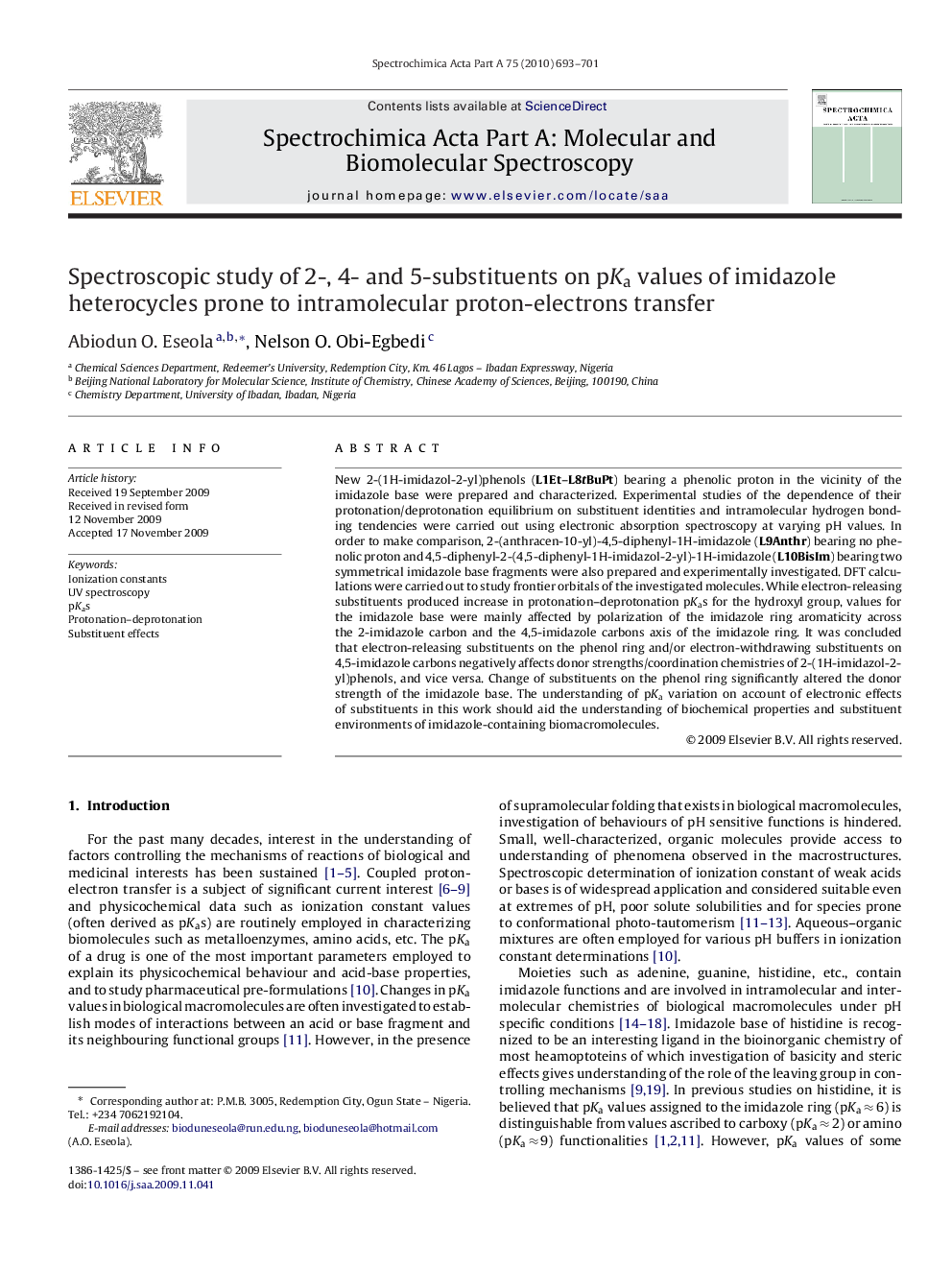| Article ID | Journal | Published Year | Pages | File Type |
|---|---|---|---|---|
| 1237204 | Spectrochimica Acta Part A: Molecular and Biomolecular Spectroscopy | 2010 | 9 Pages |
New 2-(1H-imidazol-2-yl)phenols (L1Et–L8tBuPt) bearing a phenolic proton in the vicinity of the imidazole base were prepared and characterized. Experimental studies of the dependence of their protonation/deprotonation equilibrium on substituent identities and intramolecular hydrogen bonding tendencies were carried out using electronic absorption spectroscopy at varying pH values. In order to make comparison, 2-(anthracen-10-yl)-4,5-diphenyl-1H-imidazole (L9Anthr) bearing no phenolic proton and 4,5-diphenyl-2-(4,5-diphenyl-1H-imidazol-2-yl)-1H-imidazole (L10BisIm) bearing two symmetrical imidazole base fragments were also prepared and experimentally investigated. DFT calculations were carried out to study frontier orbitals of the investigated molecules. While electron-releasing substituents produced increase in protonation–deprotonation pKas for the hydroxyl group, values for the imidazole base were mainly affected by polarization of the imidazole ring aromaticity across the 2-imidazole carbon and the 4,5-imidazole carbons axis of the imidazole ring. It was concluded that electron-releasing substituents on the phenol ring and/or electron-withdrawing substituents on 4,5-imidazole carbons negatively affects donor strengths/coordination chemistries of 2-(1H-imidazol-2-yl)phenols, and vice versa. Change of substituents on the phenol ring significantly altered the donor strength of the imidazole base. The understanding of pKa variation on account of electronic effects of substituents in this work should aid the understanding of biochemical properties and substituent environments of imidazole-containing biomacromolecules.
